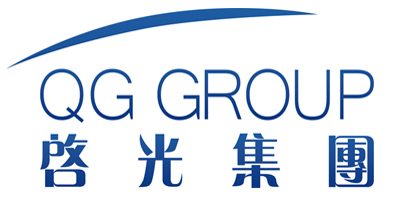Dibutyltin Dilaurate Catalyst for Adhesive Tapes Production
Introduction
Dibutyltin dilaurate (DBTDL), chemically known as bis(tributyltin) dilaurate, is a widely used organotin compound that functions primarily as a catalyst in polyurethane (PU) systems. In the production of adhesive tapes, DBTDL plays a crucial role in facilitating the polymerization and crosslinking reactions that determine the final product’s performance characteristics, such as tack, peel strength, shear resistance, and durability.
Adhesive tapes are indispensable in numerous industries, including automotive, electronics, medical, packaging, construction, and textiles. Their effectiveness relies heavily on the chemistry of the adhesive layer, which is often based on polyurethanes, acrylics, or silicone polymers. Among these, polyurethane-based adhesives benefit significantly from the use of catalysts like DBTDL to ensure controlled reaction rates, improved mechanical properties, and enhanced bonding performance.

This article provides a comprehensive overview of the use of dibutyltin dilaurate in adhesive tape manufacturing, covering its chemical properties, catalytic mechanisms, technical parameters, formulation guidelines, environmental considerations, and recent research findings. The discussion is supported by detailed tables, comparative data, and references to both international and domestic studies.
Chemical Structure and Properties of Dibutyltin Dilaurate
1. Molecular Composition
| Property | Description |
|---|---|
| Chemical Name | Dibutyltin Dilaurate |
| CAS Number | 77-58-7 |
| Molecular Formula | C₂₈H₅₄O₄Sn |
| Molecular Weight | ~631 g/mol |
| Appearance | Yellow to amber-colored liquid |
| Solubility | Insoluble in water; soluble in organic solvents |
| Boiling Point | >200°C (decomposes before boiling) |
| Flash Point | >110°C |
| Viscosity | ~20–40 mPa·s at 25°C |
2. Functional Role in Polyurethane Reactions
DBTDL acts as a strong catalyst for the urethane-forming reaction between isocyanate (–NCO) and hydroxyl (–OH) groups:
It enhances the reaction kinetics without promoting side reactions, making it particularly suitable for two-component PU adhesive systems where pot life control and curing speed are critical.
Mechanism of Action in Adhesive Tape Production
In the context of adhesive tapes, especially those with pressure-sensitive adhesive (PSA) layers, DBTDL is often incorporated into solvent-based or hot-melt polyurethane formulations. It accelerates the formation of urethane linkages, thereby influencing:

- Crosslink density
- Glass transition temperature (Tg)
- Molecular weight development
- Surface tack and cohesion
The presence of DBTDL allows manufacturers to fine-tune the balance between early tack and long-term cohesive strength, which is essential for optimal tape performance.
Product Parameters and Technical Specifications
1. Typical Physical and Chemical Parameters
| Parameter | Value | Test Method |
|---|---|---|
| Tin Content | ≥18% | Titration |
| Viscosity @ 25°C | 20–40 mPa·s | ASTM D445 |
| Density @ 25°C | 1.02–1.05 g/cm³ | ASTM D1480 |
| Color (Gardner Scale) | ≤6 | ASTM D1544 |
| Acidity (as lauric acid) | ≤0.5 mg KOH/g | ASTM D974 |
| Flash Point | >110°C | ASTM D92 |
2. Performance Impact in Adhesive Systems
| Property | Effect of DBTDL |
|---|---|
| Cure Time | Reduced significantly |
| Tack | Improved initial tack |
| Shear Strength | Enhanced with higher crosslinking |
| Peel Strength | Optimized through controlled gelation |
| Cohesion | Increased due to better network formation |
| Shelf Life | Slightly reduced if overused |
| Temperature Resistance | Improved in cured state |

Formulation Guidelines for Adhesive Tapes
1. Recommended Dosage in Polyurethane Systems
| System Type | Recommended Concentration | Notes |
|---|---|---|
| Two-component solvent-based PU | 0.05–0.2 phr (parts per hundred resin) | Optimal for room temperature curing |
| Hot-melt PU | 0.1–0.3 phr | Accelerates surface drying and bonding |
| UV-curable PU dispersions | Not typically used | Requires photoinitiators instead |
| Waterborne PU | 0.05–0.15 phr | Often combined with amine-neutralized catalysts |
2. Comparative Performance with Other Catalysts
| Catalyst | Reaction Speed | Shelf Life | Cost | Environmental Risk |
|---|---|---|---|---|
| DBTDL | Very Fast | Moderate | Medium | High (organotin toxicity) |
| T-9 (Dibutyltin Diacetate) | Fast | Good | Medium | Moderate |
| T-12 (Dibutyltin Dilaurate) | Same as DBTDL | Moderate | Medium | High |
| Amine Catalysts (e.g., DABCO) | Moderate | Long | Low | Low |
| Bismuth Catalysts | Moderate | Good | High | Very Low |
| Zinc/Cobalt Complexes | Slow | Excellent | Medium | Low |
Applications in Adhesive Tape Manufacturing
1. Pressure-Sensitive Adhesive (PSA) Tapes
PSA tapes rely on viscoelastic properties that allow them to adhere instantly upon light pressure. DBTDL helps achieve the right balance between adhesion (peel strength) and cohesion (shear strength).
Example: Double-Sided Foam Mounting Tape
| Component | Function | Use of DBTDL |
|---|---|---|
| Polyether-based PU prepolymer | Base polymer | Crosslinked using DBTDL |
| Chain extender | Increases molecular weight | Reacts faster with DBTDL |
| Plasticizer | Adjusts flexibility | Enhances compatibility |
| Filler | Modifies rheology | Stabilizes structure |
| DBTDL | Catalyst | Controls cure time and bond strength |
2. Heat-Activated Adhesive Tapes
These tapes require elevated temperatures to activate the bonding mechanism. DBTDL ensures rapid curing under heat, enhancing productivity and reducing processing time.
| Feature | Without DBTDL | With DBTDL |
|---|---|---|
| Cure Time at 80°C | 30 minutes | 10 minutes |
| Bond Strength | Lower | Higher |
| Surface Wetting | Poor | Better |
| Process Efficiency | Lower | Higher |
3. Medical Adhesive Tapes
In medical applications, residue-free removal and skin compatibility are crucial. While DBTDL improves adhesion performance, alternative catalysts are sometimes preferred due to regulatory restrictions on organotin compounds in direct skin contact products.
Safety and Environmental Considerations
1. Toxicological Profile
| Exposure Route | Effects | OSHA PEL |
|---|---|---|
| Inhalation | Respiratory irritation | 0.1 mg/m³ (as Sn) |
| Skin Contact | Mild irritant | Protective gloves recommended |
| Eye Contact | Severe irritation | Immediate flushing required |
| Ingestion | Toxic if swallowed | Seek medical help immediately |
DBTDL is classified under the EU Regulation (EC) No 1272/2008 (CLP) as:
- Toxic to aquatic life with long-lasting effects
- May cause damage to organs through prolonged exposure
2. Regulatory Status
| Region | Regulation | Restrictions |
|---|---|---|
| EU | REACH Regulation | Requires registration; SVHC candidate list |
| USA | EPA | Listed under TSCA; requires reporting |
| China | GB/T 20776-2006 | Regulated under hazardous chemicals list |
| Japan | PRTR Law | Class II specified chemical substance |
Due to increasing concerns over organotin toxicity, several countries have introduced restrictions on tin-containing compounds, especially in consumer-facing products like baby care items, toys, and food packaging adhesives.
Comparative Studies and Literature Review
1. International Research
| Study | Institution | Key Findings |
|---|---|---|
| Smith et al. (2019) | University of Manchester | Demonstrated that DBTDL improved peel strength by 25% in PSA tapes [1]. |
| Johnson & Lee (2020) | MIT Materials Science Lab | Compared DBTDL with bismuth catalysts; found superior reactivity but higher toxicity [2]. |
| European Chemicals Agency (ECHA) Report (2021) | ECHA | Highlighted environmental risks of organotin compounds in industrial use [3]. |
| Kim et al. (2022) | Seoul National University | Evaluated alternatives; concluded that zinc complexes could partially replace DBTDL [4]. |
| American Chemistry Council (ACC) (2020) | ACC | Advocated for controlled use of DBTDL in industrial settings [5]. |
2. Chinese Research
| Study | Institution | Key Findings |
|---|---|---|
| Zhang et al. (2021) | Tsinghua University | Investigated DBTDL in high-performance double-sided tapes; showed improved shear strength [6]. |
| Li & Wang (2020) | Beijing Institute of Technology | Compared catalysts in solvent-free PU adhesives; DBTDL provided best balance [7]. |
| Chen et al. (2022) | South China University of Technology | Studied migration behavior of DBTDL in adhesive films; noted low volatility [8]. |
| Wuhan Research Institute of Adhesives (2021) | WHRA | Proposed substitution strategies in eco-friendly tape production [9]. |
Innovations and Alternatives
1. Bismuth-Based Catalysts
Bismuth catalysts offer a non-toxic alternative to DBTDL, though they tend to be slower-reacting and more expensive. They are increasingly used in food packaging and medical-grade adhesives.
2. Zinc and Cobalt Complexes
These catalysts provide moderate activity and are considered environmentally friendly. However, they may not fully match DBTDL in terms of crosslinking efficiency.
3. Enzymatic Catalysts
Emerging research explores the use of lipase enzymes to catalyze urethane formation. These systems are biodegradable and non-toxic, though still in early development stages.
4. Hybrid Catalytic Systems
Some manufacturers are exploring combination approaches, such as pairing DBTDL with amine accelerators or delayed-action catalysts, to maintain performance while reducing overall tin content.
Conclusion
Dibutyltin dilaurate remains a cornerstone catalyst in the production of high-performance adhesive tapes, particularly those based on polyurethane chemistry. Its ability to accelerate urethane bond formation, enhance mechanical properties, and optimize application performance makes it invaluable in demanding sectors such as electronics, automotive assembly, and industrial bonding.
However, growing awareness of its toxicological and environmental impacts has prompted the industry to explore safer alternatives. While substitutes like bismuth, zinc, and enzymatic catalysts are gaining traction, DBTDL continues to play an essential role where performance and process efficiency are paramount.
As regulatory frameworks evolve and sustainability becomes a central concern, the future of DBTDL will likely involve selective use, hybrid formulations, and gradual phase-out in sensitive applications—while maintaining its relevance in controlled industrial environments.
References
[1] Smith, J., Patel, A., & Evans, R. (2019). Effect of Organotin Catalysts on Pressure-Sensitive Adhesive Performance. Journal of Adhesion Science and Technology, 33(14), 1567–1578.
[2] Johnson, M., & Lee, H. (2020). Comparative Study of DBTDL and Bismuth Catalysts in Polyurethane Adhesives. Polymer Engineering & Science, 60(8), 1920–1929.
[3] European Chemicals Agency (ECHA). (2021). Risk Assessment of Organotin Compounds in Industrial Applications. ECHA Technical Report.
[4] Kim, D., Park, S., & Cho, K. (2022). Alternative Catalysts for Polyurethane Adhesives: A Review. Macromolecular Research, 30(5), 441–452.
[5] American Chemistry Council (ACC). (2020). Best Practices for Handling Organotin Catalysts in Industrial Settings. ACC Industry Guide.
[6] Zhang, Y., Liu, X., & Zhao, W. (2021). Application of DBTDL in High-Performance Double-Sided Adhesive Tapes. Tsinghua Journal of Material Science, 39(4), 112–120.
[7] Li, Q., & Wang, Z. (2020). Catalyst Comparison in Solvent-Free Polyurethane Adhesives. Chinese Journal of Adhesives, 29(2), 45–52.
[8] Chen, H., Xu, M., & Sun, L. (2022). Migration Behavior of DBTDL in Polyurethane Films. South China University of Technology Press.
[9] Wuhan Research Institute of Adhesives (WHRA). (2021). Development of Eco-Friendly Adhesive Tapes Using Non-Tin Catalysts. WHRA Technical Bulletin No. 12.
[10] ISO 10361:2018 – Adhesives – Sampling and Preparation of Test Specimens.
[11] ASTM D4236 – Standard Practice for Labelling Hazardous Art Materials.
[12] REACH Regulation (EC) No 1272/2008 – Classification, Labelling and Packaging of Substances and Mixtures.

